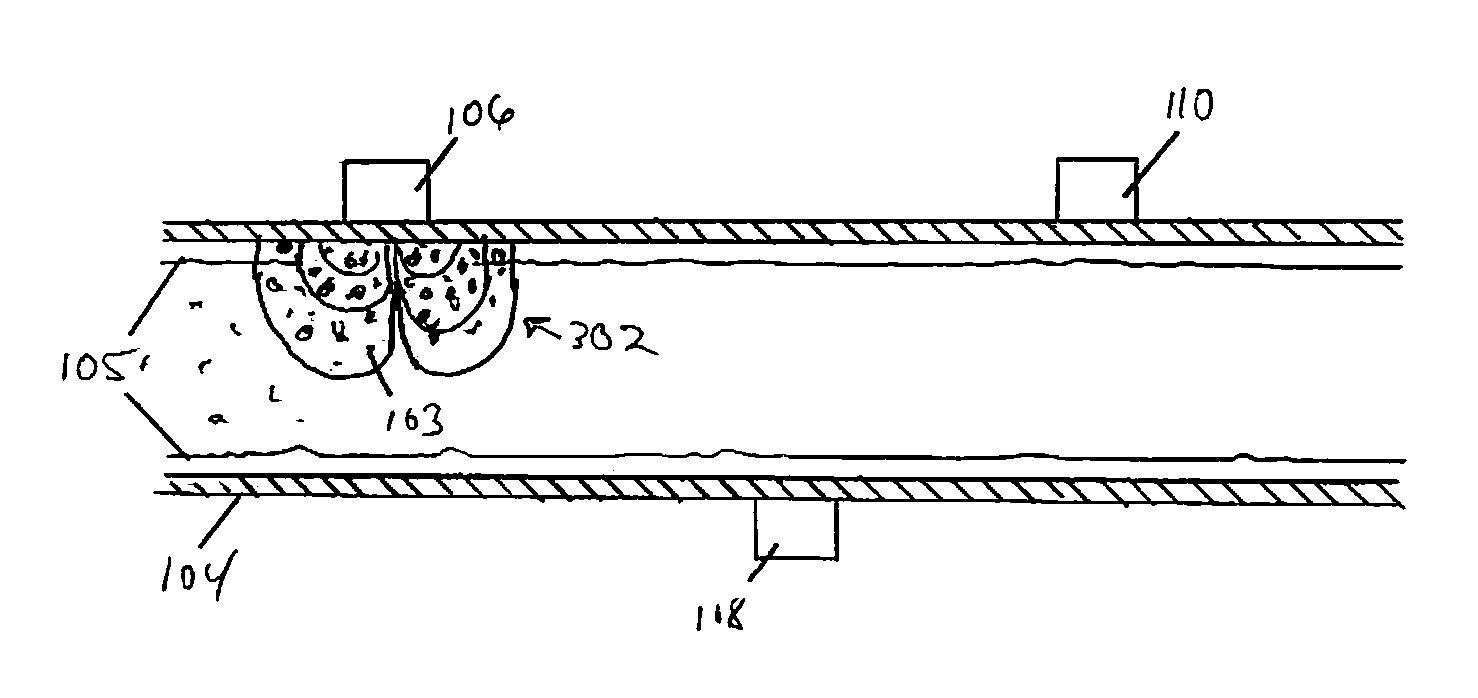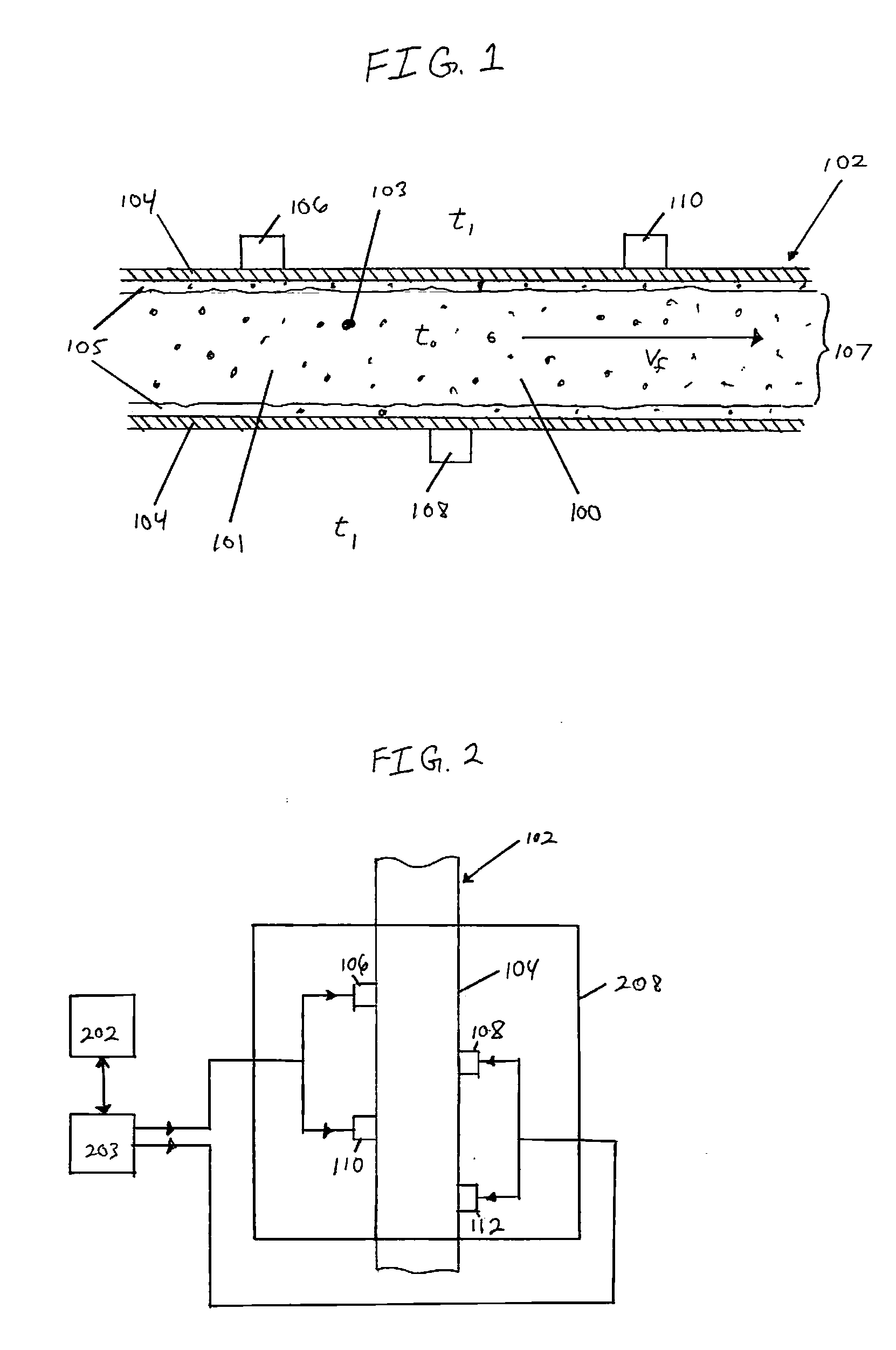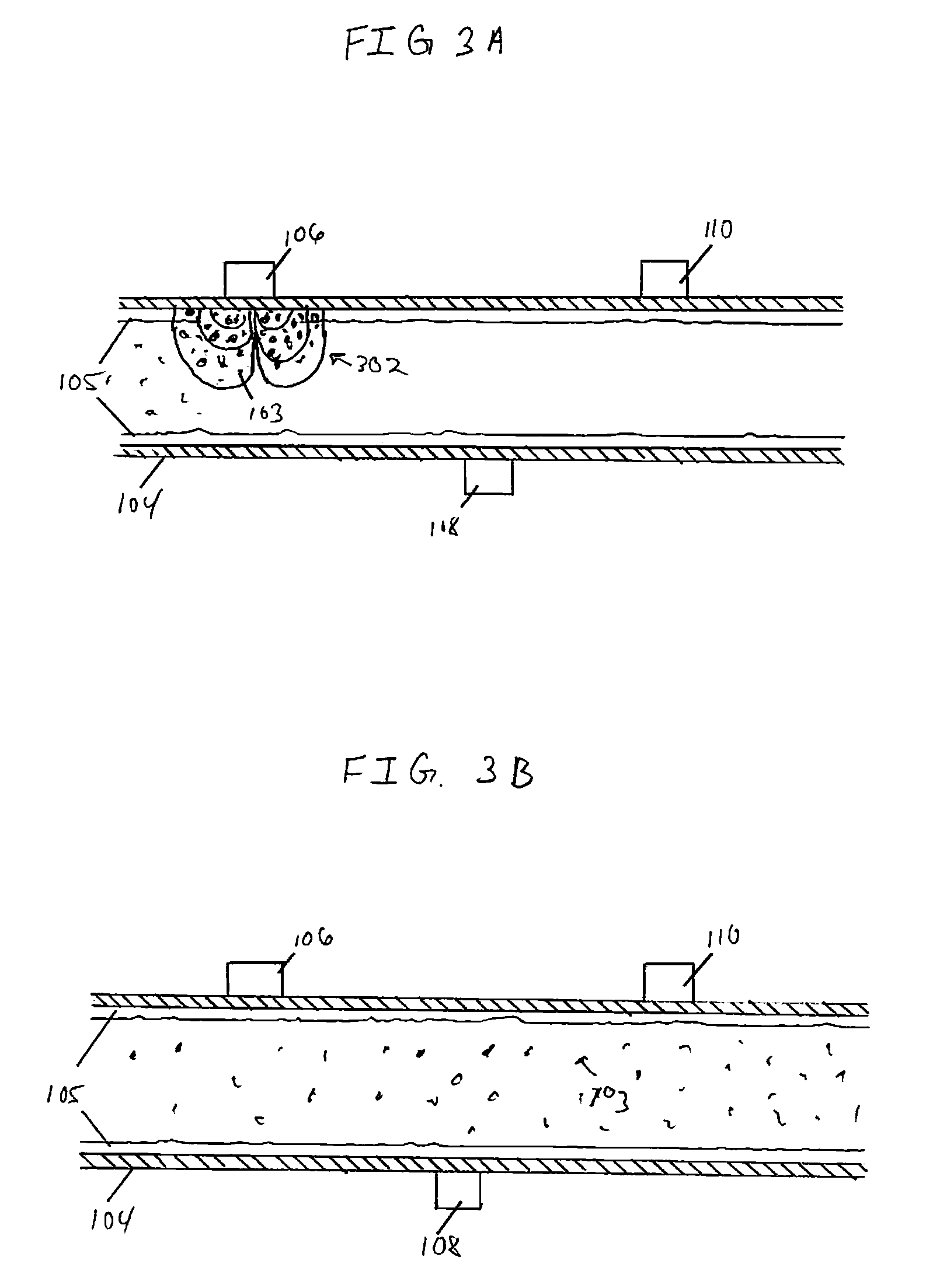System and method for convective heat transfer utilizing a particulate solution in a time varying field
a technology of convective heat transfer and particulate solution, which is applied in the direction of indirect heat exchangers, semiconductor/solid-state device details, lighting and heating apparatus, etc., can solve the problems of microelectronic components that are particularly susceptible to thermal management problems, heat transfer limitations and optimization, etc., and achieve high conductive, fast conduct heat directly from the wall, and superior thermal conductivity
- Summary
- Abstract
- Description
- Claims
- Application Information
AI Technical Summary
Benefits of technology
Problems solved by technology
Method used
Image
Examples
Embodiment Construction
[0030]FIG. 1 illustrates a fluid channel 102, having a slurry 100 flowing therethrough, to be used in accordance with the present invention. Slurry 100 includes fluid 101 and particles 103 therein. Particles 103 may comprise any type of material or combination of materials that has a field-reactive property non-limiting examples of which include an electric and / or a magnetic field reactive property. Particles 103 possess greater thermal conductivity than fluid 101. Additionally, particles 103 may vary in size and shape and further need not be uniform. The size of particles 103 preferably should not be so large as to impede the flow of slurry 100 through fluid channel 102. In an exemplary embodiment, particles 103 are no larger than several nanometers. Further, in the presence of a field, particles 103 are capable of non-homogeneous distribution within fluid 101.
[0031] In operation, slurry 100 flows through fluid channel 102 creating a boundary layer 105 adjacent to a wall 104. Acco...
PUM
 Login to View More
Login to View More Abstract
Description
Claims
Application Information
 Login to View More
Login to View More - R&D
- Intellectual Property
- Life Sciences
- Materials
- Tech Scout
- Unparalleled Data Quality
- Higher Quality Content
- 60% Fewer Hallucinations
Browse by: Latest US Patents, China's latest patents, Technical Efficacy Thesaurus, Application Domain, Technology Topic, Popular Technical Reports.
© 2025 PatSnap. All rights reserved.Legal|Privacy policy|Modern Slavery Act Transparency Statement|Sitemap|About US| Contact US: help@patsnap.com



